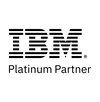Distributed across numerous systems, vast amounts of data records with potentially business-critical information are created every day. The challenge here is to describe and merge data. The more fragmented the data in a company, the more important technical and functional data integration becomes. This requires a uniform and easily retrievable schema.
- Therefore, consult our data engineers - because proper data engineering as well as data analytics will bring you to the top of your business sector.


































